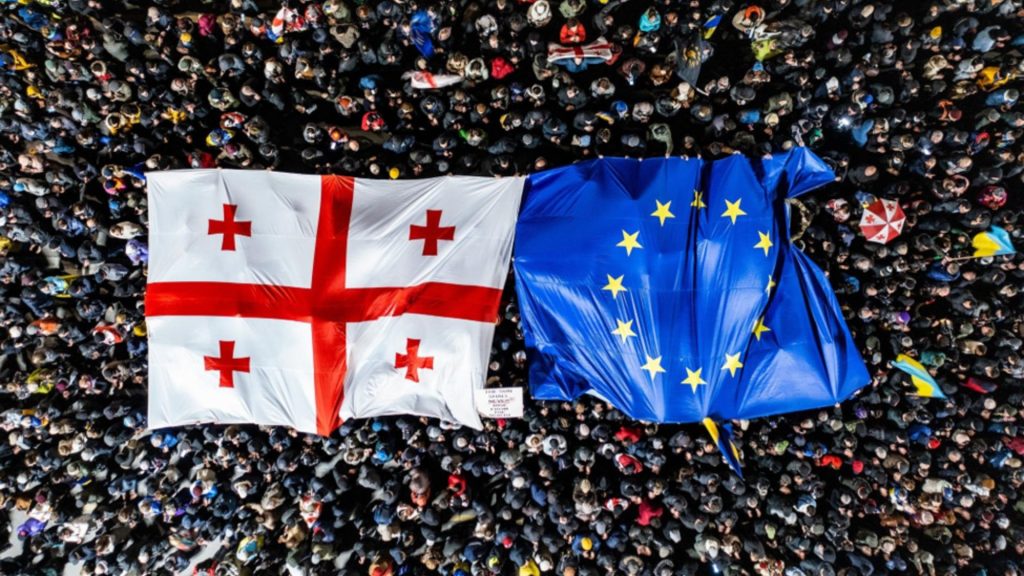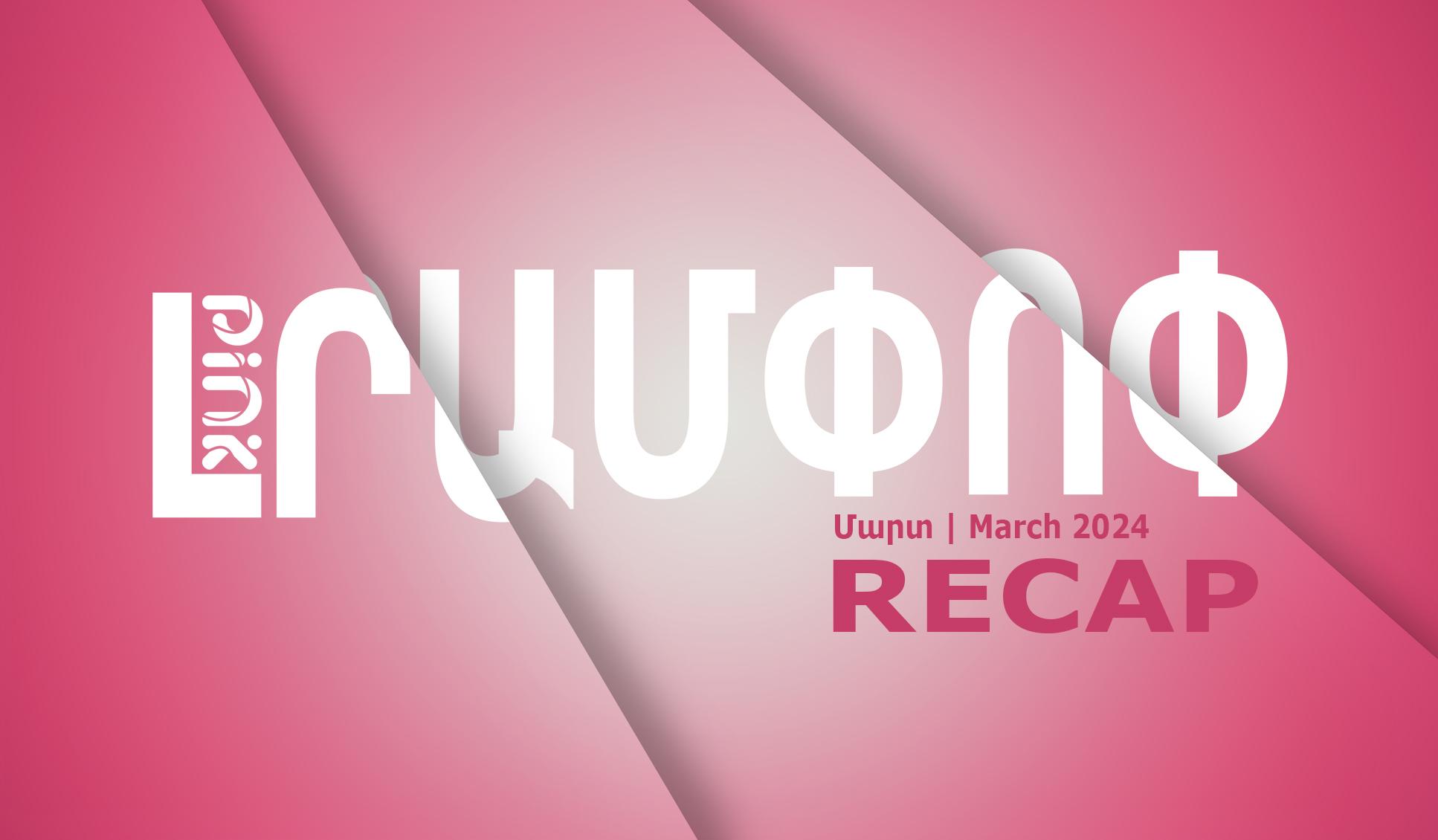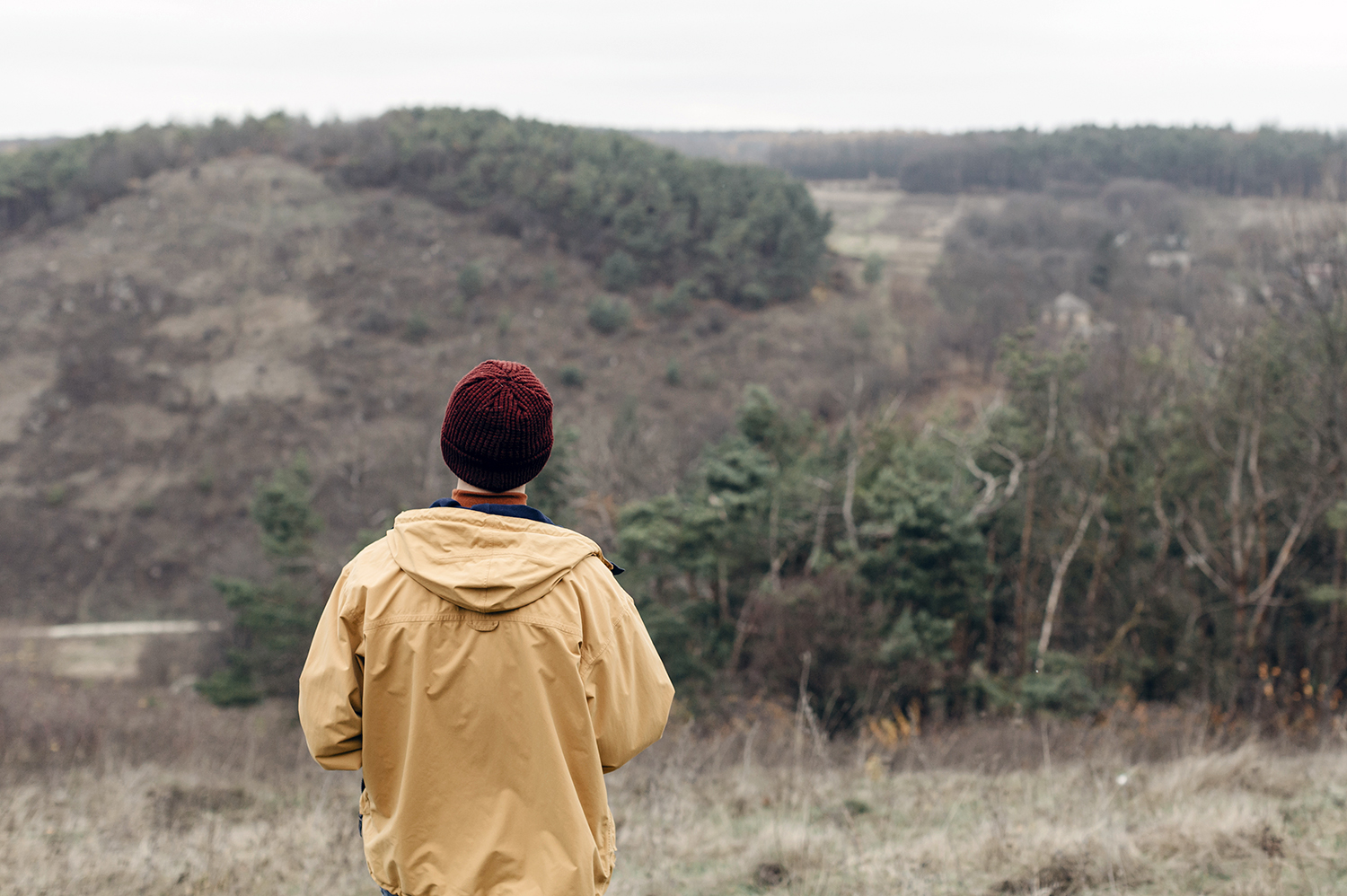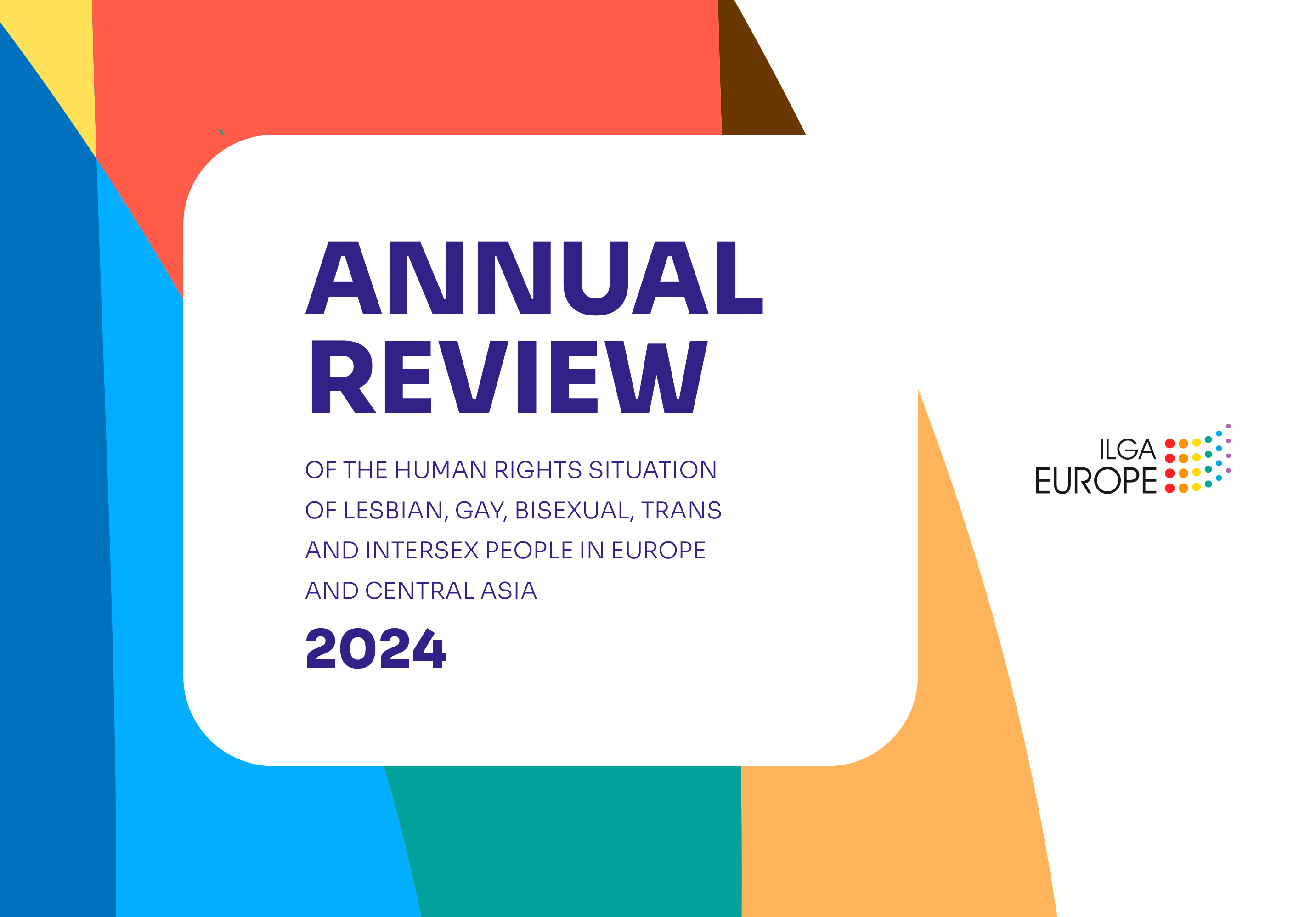Coming Out
Article by Gabe Mugalian
Art by Michelle Der Vartanian
In 2015, Armenia infamously placed 47th out of 49 European and Eurasian countries in a ranking of civil liberties, protections, and recognition allowed to queer (LGBTQ) folk by their governments. Four years later, after a regime change and persistent grassroots efforts to push queer rights forward, this number hasn’t improved. While this is incredibly disappointing, it is an unfortunate reality that queer Armenians are relegated to the margins of Armenian society, facing discrimination, shame, and violence. In the face of such physical and psychological danger, many queer Armenians choose to conceal their identities, but at what cost?
This October 11, celebrated as National Coming Out Day, Kooyrigs has spoken to five queer folks from around the global Armenian community–Kathleen, Zach, Peter, Nora, and Armen–who share common experiences in their coming-out process. While many of these moments have involved denial, violence, and fear, the stories we heard have also involved messages of hope and acceptance, a cornerstone of Armenian culture and resilience.
Coming Out
You have probably heard the term ‘coming out,’ meaning when someone who is queer understands and accepts their queerness and communicates to others and themselves about their gender or sexuality. It may seem like this is an easy step, or that it is completely necessary; at worst, it can seem dishonest to keep our identities hidden. However, coming out to oneself and to others can be one of the most difficult moments in a person’s life. There are many factors which may cause someone to remain discreet about their gender or sexuality, such as fear of losing beloved family, friends, or lovers. Even if somebody comes out to a trusted friend or relative, they may not share their identity with coworkers or the general public, for fear of losing their job, their home, or their life. In this right, it is wrong to reveal someone else’s identity–even with the intention of helping that person–because you might be putting them in uncomfortable and dangerous situations. Ultimately, coming out is a continuous, highly-personal process in which queer folks are constantly evaluating their safety, comfort, and trust of others.
Coming out begins when one realizes the way they want to be identified, the body they feel comfortable in, the people they want to have romantic or sexual relationships with, and other complex aspects of their humanity. This is different for everybody. For example, someone who is transgender is not automatically gay–and vice versa–because sexuality, gender, and biological sex are not inherently linked. For many people, this process of self-identification begins at a very young age, before we have been socialized to perform our expected gender roles. Zach Kojoyan, a queer and non-binary 29-year-old from Richmond, Virginia told us, “I was probably first aware of my queerness around age five or six. I remember always wondering what it would be like if my body was different, and why my body was the way it was.” Kathleen Aydjian, a 26-year-old from Los Angeles who identifies as bisexual and cisgender, confirmed this trend, and said, “I always realized my attractions were different than other people, but I didn’t quite understand everything. As I grew older (especially in middle school), I would research as much as I could with what was available to me (early 2000’s) about LGBT+ and eventually, I realized my feelings weren’t alone or strange.”
Like Kathleen, many people do not have the resources to learn about diverse genders and sexualities while growing up, and some do not begin to develop such understanding until their teenage years and well into adulthood. An anonymous Muscowite in their early 20’s, who we’ll call Peter, told us, “I was fortunate enough to have understood the fact that I’m gay relatively early on (in my early-teen years) not having fallen into the trap of self-denial, but I know this is a struggle for some of my Armenian queer friends, a portion of whom have accepted themselves in their late twenties and the rest still reject who they are.” This narrative plays out time and time again, a result of internal and external denial stemming from global society’s negative views of LGBTQ people. These views are often due to limited exposure and understanding of different identities. An anonymous 17-year-old Yerevantsi, who we’ll call Nora, spoke to this when she said, “in my family, we never really talked about LGBT until 2015, so because of that I grew up homophobic.” Thinking back, she added, “I can’t tell you when exactly I realized I was [bisexual], but I know that at least since 2015, when gay marriage became legal in the US, I knew… [and] as stupid as it may sound, anime and the anime fandom, with all of their boy x boy shipping, made me grow comfortable with the concept of LGBT.” This taps into the importance of representation in media and exposure to different identities and lifestyles from family, friends, and community.
Family
Unfortunately, the prejudices held by global society, especially the Armenian community, often emerge when we are coming out to our family and friends. Nora, reflecting on a time when her mom would not stop pressuring her about her sexuality, said, “I finally gave in and in tears told her ‘I wouldn’t mind marrying a girl’ and just cried so much because I thought my mum would hate me.” Nora went on to say, “My mum was so in denial about me being [bisexual] that she forgot and I had to come out to her the second time… From then on I just avoided talking about it, and came out only to people who I knew wouldn’t mind me being [bisexual], which in Armenia is surprisingly a lot of people.”
Peter, citing a similar experience, told us, “I’m open to a handful of friends and one family member… as far as that family member is concerned, they first got confused and sad over the ‘news’ that I’m into boys and not into girls, then the denial stage kicked in — the family member speculated that ‘no one in the family is like that, and so it’s not possible that you are really into guys,’” going as far as to question the ‘purity’ of their family genes. Peter added, “right now the family member believes that I just haven’t found a girl that I would fall in love with yet.” This type of denial is common, but it is usually a result of societal pressure to be a ‘good’ Armenian family. Peter said, “You are expected by your parents and extended family to find an Armenian girl and marry her (this becomes particularly pressing in the context of being a diasporan), have children, and thus pass your ‘Armenianness’ to the next generation,” which creates the internalized understanding that anything other than heterosexual relationships are not only prohibited, but wrong and un-Armenian.
Reaffirming this, Kathleen told us, ”being in religious schools and a very Armenian family, I always was met with homophobia and homophobic language.” She explained, “with my family, it is only my mom who, while loves me for who I am, hides it from the rest of my family since they are far more conservative. It makes me worry if I ever was in a non-hetero relationship what would happen.” Thinking back, Kathleen told us, “when I was 14 years old, I finally admitted my sexuality to myself. I tried to come out to my mom then, who dismissed it and claimed it was ‘just a phase but I was straight in the end,’” a common form of homophobia which seeks to pass-off queer identities as ‘phases’ or cries for attention. While we have all seen and heard in-your-face homophobia like expletives and staring, sometimes the expectations that our family has reflected an ingrained prejudice against LGBTQ people in a more subtle way. When these expectations aren’t met, it can lead to anger and confusion, or dismissal of queer identities.
Touching on this, Zach told us, “I came out to my parents the first time at 24. It went well because they can be pretty progressive and I didn’t exactly tell them everything. At 26, I told them everything. My mom was extremely supportive and a little excited. My dad was not. He yelled and cursed and tried to place blame on someone or something for making me this way… He eventually said he just wants me to be happy, healthy and safe.”
Violence
While some people are lucky enough to experience acceptance from their families and communities, others continue to face denial and, all-too-often, physical, emotional, economic, and psychological violence. Zach, telling us about one of their coming-out experiences, said, “I later told a teacher of mine, someone I had considered a friend and mentor… This teacher would go on to become my worst abuser and whenever I tried to get myself out of that toxic ‘relationship’, she weaponized my gender identity against me: ‘No one will ever love you for this the way I do.’ That lasted almost two years.” This type of isolation is made possible when LGBTQ identities are not allowed to be open in their societies, which opens the gate for even more violent and traumatizing situations.
Shedding more light on this reality, Armen Hovhannes, a 59-year-old non-binary person from San Francisco, said, “my parents left this world never having been able to accept me. One of the last things my father said to me was, ‘the only thing I regret is that I didn’t beat you more. Then maybe you would have changed your disgusting life.” They explained, ”my mother outed me when I was 15… She proceeded to tell me my father was going to kill me, which was true because he did try. Twice. Once with a knife, once with his hands to my throat. I left [home] to save my life. That was 1977… It was still really dangerous for LGBTQ people even outside the Armenian community. I didn’t know where to turn… after my father attacked me with a knife, tried to strangle me, I tried to kill myself, and lots of other violent episodes, I left home at 17.” Armen went on to say, “when I was a queer youth, it was still totally common to be jumped, beaten, and killed for being visibly non-conforming. Yes, even in [San Francisco]… I’ve been attacked and gay-bashed, years ago, before hate crime was a thing. And cops laughed at you if you took your queer ass in to report such things,” because there was no one else willing to defend you. Armen reminds us of the endangered reality lived by many queer people even to this day. They told us, “I’m 59. I spent the first 10 years of my adult life in San Francisco, homeless off-and-on, drifting around aimlessly, working at the lowest-paying and hardest jobs,” with the silver lining being, “at least I was finally living in a gay community.”
The dream of living in an overtly queer-friendly community is often idealized by queer youth, especially those who were not raised in one already. However, not only is this largely inaccessible to most people (who cannot afford to leave their families, jobs, hometowns, etc.) but the need to escape violent situations stunts the growth and diversity of the communities we are leaving and does not eliminate the danger. Nora, reconciling herself with reality, says, “I’ve been always dreaming about the fact that I’d be able to leave Armenia and then express myself however I’d like. But then I realized that people in Armenia will find out and that it’ll be dangerous to return. Also if the government finds out, I might not be allowed to have a driver’s license and be a teacher,” citing psychiatric examination records–the tool used to exempt homosexual men from serving in the Armenian military–as grounds used to deny employment and other rights. This brings to light the sort of institutional violence LGBTQ folk experience throughout their lives, of which most cases go unreported and unrecognized.
These situations often cause people to hide their identities, such as Kathleen, who said of her sexuality, “while living in Armenia, most people don’t know about it and that is for my own safety. Those that do know I feel I can trust with that knowledge. I hate that I have to do it, but it’s, unfortunately, something I am all too familiar with doing.” Zach also resigned to the reality, said, “my queerness is often hidden even when I don’t want it to be. I’m especially hidden here in Armenia. I’m not necessarily trying… It’s just not that apparent” because of the societal expectations of what a ‘man’ looks like. While the implications of ‘passing’ as heterosexual or cisgender are not necessarily violent in a physical sense, they do cause internal struggles which can manifest themselves in similarly negative ways, especially when one’s true identity is not valued or accepted by their communities and society at large.
Acceptance
Everybody craves validation and acceptance in their lives in one way or another. Unfortunately, the threat of violence causes many queer folk to intentionally hide, sometimes denying their identities or living double-lives. Peter told us that “a noticable part of Armenian queer guys I meet (including gay guys) say they will start a heteronormative family (marry a girl and have children) at some point of their lives and will go on having relationships with guys alongside” in order to blend in and be accepted in mainstream society. Others seek acceptance from other sources they see as important, like Armen, who said, “as a kid, I was pretty religious, growing up in the Armenian Apostolic church… right up until puberty, I prayed every night to God and to Jesus to make me a boy. I truly believed that one morning I’d wake up in my real gender. I especially thought Jesus would understand because he kind of looked androgynous in the artistic depictions we saw. I really loved that.”
It is normal to want acceptance from those around us, whether it be our Gods, academic and cultural communities, or friends and family. However, not everyone has the same expectations or needs when it comes to acceptance. When asked about how the Armenian community can be more accepting, Zach told us, “I don’t know that I need anything from the Armenian community. Unfortunately, I’ve felt like an outsider to [this] community for most of my life. If anything, I need the same thing from the Armenian community that I do from the rest of the world. I need them to see me as a person first. Not as a man. Not as an Armenian. Just a person.“ In this right, acceptance begins at a personal level, especially with the acceptance of oneself. As Zach told us, “for me, being queer is life-saving. I know that it can be dangerous and I know that I benefit from being able to pass as a [cisgender heterosexual] man. But if I didn’t know who I was, I don’t know if I would have survived this long. Finding my queer identity brought me closer to stability, being certain of myself and being able to say confidently that this is who I am. I know myself better now that I understand my queerness.”
Identity
Humans are a complicated, diverse, and dynamic species. From a cultural level all the way down to an individual level, we change and grow over time, not always in a way that ‘makes sense’ to everyone around us or even ourselves. That being said, reconciling our many identities can be difficult at times. As Zach explained, “my perception of the world around me is always being shaped by my identity… I don’t believe there is only one ‘correct’ way to be Armenian and I don’t believe there is a correct way to be queer. So, with that in mind, I’d say my queerness is always active in my Armenian identity as I explore Armenian culture.“ Zach added, “I’ve found that my identity as an Armenian and as a non-binary person both exist in a liminal space… Nobody seems to be sure what to make of me as an Armenian or as a non-binary person. For me, the integration of the two hinges on that fact.”
Kathleen reaffirmed this thought when she told us, “My Armenian identity has always been deeply ingrained in me since I was a little kid… [but] my queer identity is my queer identity and Armenian is my cultural identity. They don’t function separately from each other. I feel bigotry isn’t inherently Armenian culture. I believe that is a personal identity trait, and it just so happens [that] many Armenians are unfortunately very ignorant and bigoted (along with sexist). But there are also many Armenians who aren’t this way at all.”
Հպարտ (Proud)
Just as Kathleen, Zach, Peter, Nora, and Armen have held their Armenian identities their whole lives, so have queer Armenians felt a closeness to these seemingly contrary identities–whether they have come out or not. We have been gay, transgender, asexual, non-binary, Armenian, and many other things our entire lives, and that is not something that will ever change no matter how much oppression we face. More and more, we are learning to be proud of our intersecting queer Armenian identities and the many forms this takes. In the end, Armen told us, “What I really wanted to share is that with all the agony of losing your family (it’s particularly devastating for us Armenians, I know), all the internalized homophobia we have to heal from, all the myriad ways we are hurt and damaged by queerphobia, it’s still possible to have yourself a decent life. Remember that we are the descendants of some really resilient people, Armenian + queer!… I want queer youth, especially Armenians in really scary homo/trans/queerphobic situations, to not give up, not stay silent. There are lots of people like you out there. And we love you.”
So with that, remember that we love you. If you are using this October 11 to come out to a friend, to your family, to a teacher, or simply to yourself, remember that no matter what people say, you are worthy of love and acceptance. If ever you struggle to find that acceptance, you can always reach out to a fellow Kooyrig, and we’ll take your pain.




